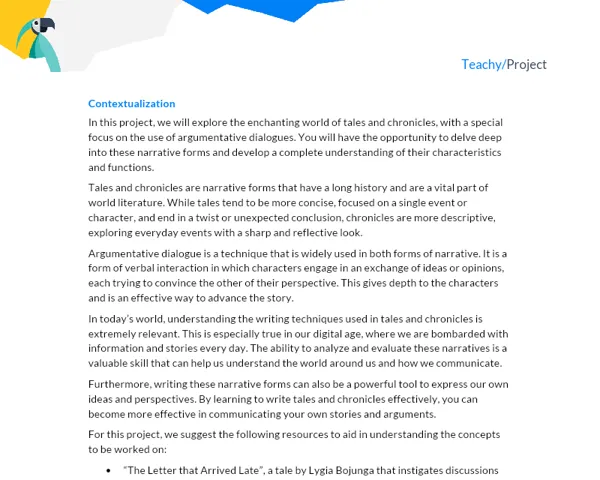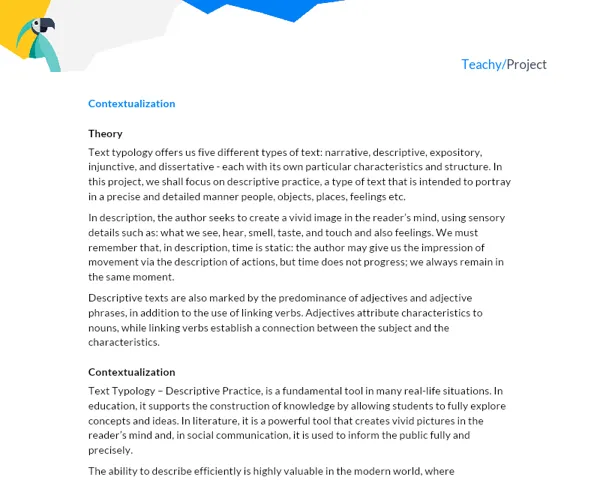Contextualization
Hello, dear students! Are you ready to embark on an incredible journey of discoveries about the Portuguese language? Our study theme will be "Pronouns". But what are pronouns? Well, pronouns are words we use to replace or represent names. They are like "little helpers" that allow us to speak and write more efficiently and interestingly.
Let's start with a simple example: imagine you want to talk about Ana, a classmate. Without pronouns, every time you referred to her, you would have to repeat her name, which would be tiring and confusing. Now, if we use the correct pronouns, like "she" or "her", communication becomes much easier and clearer, right? And this is just a basic example, as pronouns are used in various contexts and situations.
But why study pronouns? Knowing how to use them correctly is essential for effective communication, both in writing and speaking. Furthermore, knowledge of pronouns helps us better understand the structure of our language and express our ideas more precisely and richly.
Introduction
Now that we know what pronouns are and their importance, it's time to learn more about the different types of pronouns. Pronouns can be classified into five main categories: personal, possessive, demonstrative, indefinite, and interrogative.
- Personal Pronouns: as the name suggests, they refer to the discourse people. For example: I, you, he, we, you, they.
- Possessive Pronouns: indicate possession or belonging. For example: my, your, his, our, your, their.
- Demonstrative Pronouns: point to something or someone in space or time. For example: this, that, that, this, that, that.
- Indefinite Pronouns: do not precisely determine the people or things they refer to. For example: someone, no one, everything, nothing, certain.
- Interrogative Pronouns: are used to ask questions. For example: who, which, how much, where, when.
Now, how about putting into practice what we have learned? Are you ready for our challenge? Let's go!
Practical Activity
Activity Title: "The Journey of Pronouns"
Project Objective:
This activity aims to identify and correctly apply the different types of pronouns studied. Additionally, it aims to develop skills such as cooperation, creativity, communication, and time management.
Detailed Project Description:
Students, in groups of up to 5 participants, will create a "Pronoun Journey Panel". This panel will be a visual representation of the studied pronouns, their uses, and functions. The groups should research, discuss, elaborate, and present their panel to the class.
Required Materials:
- Large cardboard or paper for the panel
- Colored pens, colored pencils, crayons, etc.
- Old magazines, newspapers, scissors, and glue (for cutouts and collages)
- Internet (for research, with teacher or parent supervision)
Step-by-Step for Activity Execution:
-
Group Formation: The teacher will divide the class into groups of up to 5 students.
-
Material Distribution: Each group will receive a large cardboard or paper, colored pens, colored pencils, crayons, old magazines, scissors, and glue.
-
Research and Discussion: The groups should research and study the different types of pronouns. They can use textbooks, dictionaries, online materials (always with teacher or parent supervision), and discuss among themselves to understand the differences and functions of each type.
-
Panel Creation: Based on their research, the groups will create a "Pronoun Journey Panel". In this panel, they should creatively represent each type of pronoun. For example, they can draw, write, cut, and paste words or images that illustrate the pronouns. Each pronoun must have a clear explanation of its use and function.
-
Presentation Preparation: In addition to the panel, the groups should prepare an oral presentation to explain their work to the class. They should organize themselves so that each member participates and has the opportunity to speak.
-
Work Presentation: On the agreed date, each group will present their "Pronoun Journey Panel" to the class. After the presentations, students will have the chance to ask questions and discuss what they have learned.
Remember, the most important thing is to work together, respect each other's ideas, and have fun while learning! I wish you all an excellent journey with pronouns!



